Switch to the mobile version of this page.
Vermont's Independent Voice
- News
- Arts+Culture
- Home+Design
- Food
- Cannabis
- Music
- On Screen
- Events
- Jobs
- Obituaries
- Classifieds
- Personals
Browse News
Departments
Browse Arts + Culture
View All
local resources
Browse Food + Drink
View All
Browse Cannabis
View All
Browse Music
View All
Browse On Screen
Browse Events
View All
Quick Links
Browse Classifieds
Browse Personals
-

If you're looking for "I Spys," dating or LTRs, this is your scene.
View Profiles
Special Reports
Pubs+More
UVM Seeks to Secure Its Future by Building Up Its Research Muscle
The school's leaders believe that winning grants and attracting more high-profile scientists is essential to securing the future of the university.
Published August 28, 2024 at 10:00 a.m. | Updated September 4, 2024 at 9:56 a.m.
Since Kirk Dombrowski was hired in 2020 to raise the University of Vermont's research profile, he's taken stock of the far-flung, science-driven investigations the school's 1,700 full- and part-time faculty members are pursuing. He's had a lot to catalog, from groundbreaking medical research to data analysis that improves flood predictions.
Scientists at UVM's Proctor Maple Research Center study methods to get more sap from maple trees, while undergraduates wade through Vermont streams to assess flood risks. Engineering professors look for ways to improve high-voltage energy grids, while two assistant professors, both nutrition experts, this month published the results of their eye-catching research: "It's All Just F*cking Impossible: The Influence of Taylor Swift on Fans' Body Image, Disordered Eating, and Rejection of Diet Culture."
Meanwhile, environmental science professor Paul Bierman has drawn attention around the world for his research on the Greenland ice sheet. He's shown that the ice, once thought to have been stable for the last 2.6 million years, has melted as of just 400,000 years ago. Closer to home, Bierman has studied the risks for more landslides along Burlington's own Riverside Avenue, publishing his results in a scholarly journal this summer.
Related UVM Scientists Unearth Bad News for Our Climate Future Beneath the Greenland Ice Sheet

UVM Scientists Unearth Bad News for Our Climate Future Beneath the Greenland Ice Sheet
By Ken Picard
Environment
As UVM's vice president for research and economic development, Dombrowski has set out to build on this base. To identify the university's high performers in the research realm, he used software to rank faculty by how many patents they obtained and how much grant money they brought in. Among his findings: More than 100 faculty members in six colleges and 22 departments were doing research involving rivers and lakes.
Dombrowski decided to connect those scientists with one other and with others across the country. The result: The UVM Water Resources Institute formed in May to enable collaboration among hydrologists, geoscientists, ecologists and others who have studied water for decades and attracted millions of dollars in grants in the past several years. The institute's faculty director, Beverley Wemple, says the collaborations have already raised UVM's national profile.
UVM's leaders believe that building the school's research muscle — winning more grants, attracting more high-profile scientists, finding synergies such as the Water Resources Institute — is essential to securing the future of the university and its place in Vermont.
As the number of high school graduates declines and competition for them becomes more fierce, they say, making UVM a powerhouse of scientific research is key to drawing the undergraduates of tomorrow.
"We have to be a national brand, or we're toast," Dombrowski recently told university administrators and local business leaders at an event in South Burlington.
Outgoing president Suresh Garimella hired Dombrowski, formerly the associate dean for research at the University of Nebraska-Lincoln, to position UVM as a major research institution. Garimella himself arrived in 2019 from Purdue University, where he was executive vice president for research and partnerships.
Thanks in part to this intensified focus, UVM expects to reach a long-worked-for milestone in December: designation as an R1 university, a measure of a school's commitment to research and graduate studies — and a coveted marker of prestige in the academic world.
Related Kirk Dombrowski Aims to Make UVM a Research Powerhouse
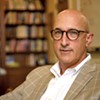
Kirk Dombrowski Aims to Make UVM a Research Powerhouse
By Courtney Lamdin
Tech
The stakes are higher than just the health of the university. UVM's research has the potential to enable iconic Vermont industries such as maple sugaring to thrive. It could help communities plan better for flooding. And it could generate more spin-off companies that employ generations of Vermonters.
UVM's progress to date helped Garimella win the confidence of the University of Arizona board, which cited UVM's research gains when it announced on August 8 that it had hired him as its next president.
Related UVM President Garimella to Leave for University of Arizona
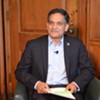
UVM President Garimella to Leave for University of Arizona
By Anne Wallace Allen
Education
UVM trustees agree that research is critical to UVM's future, and the R1 designation remains at the heart of their vision for the school. It is expected to help the university attract strong candidates for the president's job, which the board of trustees will be working to fill over the next several months, said Ron Lumbra, the board chair.
"With the demographic cliff facing us in the Northeast, we have to have a much broader and more compelling reputation," Lumbra said. "Expanding to R1 in research puts us in a new stratum. We're already seeing it in the presidential search. Candidates who we would not be seeing as a non-R1 school are showing interest in our university."
Economics 101
R1 status is conferred by Carnegie Foundation for the Advancement of Teaching. Its newly updated R1 criteria require schools to spend more than $50 million each year on research and to confer more than 70 doctoral degrees — both standards that UVM meets, Dombrowski said.
The university's research grants from federal and state agencies, corporate partners, foundations, and individual donors hit $266 million in the fiscal year that just ended — about twice the sum UVM brought in five years earlier. The College of Engineering and Mathematical Sciences saw research funding rise nearly 60 percent last year.
Dombrowski notes that 2023-24 was the first year UVM took in more money from research awards than from undergraduate tuition.
The administration has invested to achieve this. The base budget of the Office of the Vice President for Research has grown about 20 percent, to $7.8 million, over the past five years. The office, which has 199 workers — many embedded in college and department offices — searches for grant opportunities, advises scientists and completes about 2,800 grant applications each year, Dombrowski said.
Having more administrators to help with grant paperwork has been key, according to scientist Yolanda Fanslow Chen, a professor in the College of Agriculture and Life Sciences whose lab focuses on how insect species adapt to change in agricultural ecosystems. Chen has spent years studying an invasive fly, the Swede midge, which devastates organic broccoli crops.
When she arrived at UVM 16 years ago from a research position in the Philippines, she was surprised by how many administrative tasks she was expected to complete on her own, she said. Now, staffers help fill out the applications, freeing up more of her time for her research.
UVM has former U.S. senator Patrick Leahy to thank for some of its boost in research spending. Just before his retirement last year, Leahy, then chairman of the Senate Appropriations Committee, steered a flood of money to UVM: $15 million for the new Leahy Institute for Rural Partnerships; $13 million for food research on farms; $10 million for the Center on Rural Addiction; $2 million for unmanned aircraft systems research; $4 million for a future Climate Impacts Center of Excellence; and $4 million for the Marcelle Melosira, the new research vessel bearing his wife's first name that serves as UVM's floating classroom and lab on Lake Champlain.
On Tuesday, his successor, Sen. Peter Welch (D-Vt.), announced the National Science Foundation was awarding $5.9 million to UVM for various research projects, as well as $2 million for Norwich University and $685,896 for Middlebury College.
Overall, UVM's biggest grant-getter is the Larner College of Medicine, which receives $90 million to $100 million annually in research funding — about 35 percent of UVM's total, according to Sara Helms Cahan, associate vice president for research.
But if it is to stand out as a major research institution, UVM still has a long way to go. Its rivals, too, have beefed up their research offices for the same reason UVM has: survival.
The National Science Foundation ranks U.S. colleges and universities in terms of how much money they spend on research and development. From 2020 to 2022, the last period for which its statistics are available, UVM's research expenditures increased by 13 percent, and its rank on the NSF's list climbed from 145 to 123. But in those three years, R&D spending at the top 200 institutions went up by 16 percent on average. And the stats place UVM on the low end among New England state institutions pursuing similar goals. For example, R&D grew 28 percent at the University of Maine in the same three years and 31 percent at the University of New Hampshire.
Dombrowski's aspiration is to move UVM's research to the level of private universities such as Rice, Vanderbilt, Tufts and his alma mater, Notre Dame, where R&D expenditures increased 23 percent between 2020 and 2022; it's ranked 107 on the NSF list.
"I'll beat Notre Dame at some point in the next four or five years," he predicted, with characteristic bravado. "I will pass them in research."
Bold talk, but it's not yet clear UVM can match the might of that institution, which has fewer undergraduates than UVM but an endowment of $16 billion.
Competitive pressures aside, Dombrowski wants UVM to be a place where students get the same opportunities as they would at those prestigious private schools. He noted that tuition, room and board costs $95,000 at Tufts this year, while Vermonters will pay $36,000 for UVM. Tuition and fees are waived for Vermonters whose families make less than $60,000.
"'The value proposition for Vermonters is, you can send your kid to UVM and they'll get everything they could get at Tufts or Rice or Notre Dame," Dombrowski said.
Laws of Attraction
Chris Danforth, a computer scientist and mathematician who codirects the Computational Story Lab at Vermont Complex Systems Center, has gained national attention for his mood-measuring Hedonometer tool, which analyzes Google Books, articles in the New York Times, music lyrics and posts on X.
Danforth could work anywhere, Dombrowski said, but chose Vermont.
"He loves living here," Dombrowski said. "His kids go to school here. He loves the kooky environment we have here in Vermont. He rides his bike in the snow."
The lab enables faculty and students to use ideas from psychology, sociology, linguistics and physics to build tools that enable computational social science — a field that uses data to analyze society.
Danforth said UVM's relatively small size is important to him.
"At a much larger school, this sort of work would be discouraged for not being easily categorized into traditional applied mathematics or computer science, since those are the departments we work in," Danforth said. At many institutions, he said, pressure on faculty to stay within very well-established areas of knowledge can stifle innovation.
"I think of it like a ship," he said. "The smaller boats are, the more nimble they are."
The giants in the NSF's R&D rankings are places like Johns Hopkins University, which has a world-famous medical school and spent $3.4 billion on R&D in 2022; and Stanford University, which in 2022 received $1.1 billion from a Silicon Valley entrepreneur to advance research on climate and sustainability.
With an annual appropriation of $57 million from the State of Vermont and an endowment of $853 million — a small amount compared to top private universities whose endowments number in the billions — UVM struggles to compete for top scientists.
Bioengineering researcher Ryan McGinnis and his wife, Ellen McGinnis, cofounded a company called Biobe while they taught at UVM. The startup uses machine learning to create tools for assessing children's mental health. Ellen was an assistant professor in the Department of Psychiatry and Ryan worked in UVM's Complex Systems Center on remote patient monitoring.
When Ryan called Dombrowski two years ago to tell him the couple were leaving for the Wake Forest University School of Medicine in North Carolina, Dombrowski hoped UVM could make a counteroffer. But Wake Forest had promised Ryan $5 million to start his lab.
"We're not going to be able to compete at that level," Dombrowski said. "We have to acknowledge that Vermont isn't for everyone."
Those departures notwithstanding, Dombrowski said he still anticipates drawing the top-flight faculty, researchers and visitors who now tend to set their sights on places such as Tufts and Vanderbilt.
"If we can be seen as a university in the center of a tech hub, in the center of an innovation space, that's what is going to keep us viable," he said.
He believes his strategy can increase the number of undergraduate applications from 30,000 to 40,000, and attract talented kids from states such as Michigan, which has its own excellent schools. UVM's long-term plan is to keep undergraduate enrollment at current levels, about 11,000, but to improve the quality of applicants. Lumbra, the UVM board chair, said the school aims to double the number of graduate students, now at 1,500, within the next five years.
"To convince them to come here, we have to look like something that's very interesting and very different," Dombrowski said. It's feasible, he said, because he thinks Vermont offers an unparalleled quality of life.
Data science researcher Bryn Loftness, a PhD candidate in UVM's Complex Systems and Data Science program, said she chose UVM because the program is well regarded nationally. Loftness, who was a cofounder of Biobe and remains its CEO, also clicked immediately with Ryan and Ellen McGinnis and with another adviser, Nick Cheney, when they met in 2021. This year, Biobe won LaunchVT, a Burlington pitch competition for startup companies. (Ryan and Ellen McGinnis remain involved in the company.)
"In my first meeting [with my advisers], I realized the energy just fit, and the values aligned, and that has stayed consistent," Loftness said. "I felt the inklings of collaboration, rather than feeling like I was about to go into a program where I was going to be used for my coding abilities," she said.
Financial Aid
With 4,125 full- and part-time faculty and staff and a budget of $940 million, UVM is one of Vermont's largest employers. A wealthier, more stable UVM would help Vermont solve some of its most pressing problems, Dombrowski said, including its dearth of young people and its rising taxes.
"UVM is the best economic growth opportunity for Vermont," Dombrowski said. "We are the place that can create the jobs and bring people to the state."
Successful universities create new companies, something UVM has done — albeit sluggishly — over the years.
"I wouldn't claim UVM is a class leader in spinning companies out of our research," said Doug Merrill, who works as a regional innovation officer in Dombrowski's office. "But we've made a lot of changes in the last five to 10 years that are going to improve that. It's going to take some time to see the results."
University administrators often tout Packetized Energy, founded in 2016 by three UVM electrical engineering professors and acquired in 2022 by the New York-based EnergyHub. Its technology helps balance supply and demand on the electric grid.
Another favorite is Benchmark Space Systems, cofounded in 2017 by graduate Ryan McDevitt. The Burlington-based company, which makes satellite propulsion systems, has more than 65 employees and a research facility in Pleasanton, Calif.
Related Vermont’s Benchmark Space Systems Makes Satellites More Maneuverable
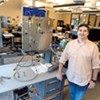
Vermont’s Benchmark Space Systems Makes Satellites More Maneuverable
By Jordan Adams
Tech
Vermont Natural Coatings, a Hardwick company with about a dozen employees that makes nontoxic wood finishes from whey protein, is another successful startup. Its president, Andrew Meyer, graduated from UVM in 1992 and developed his patented formula with help from a UVM food scientist. The 20-year-old company is building a new manufacturing plant this summer.
click to enlarge 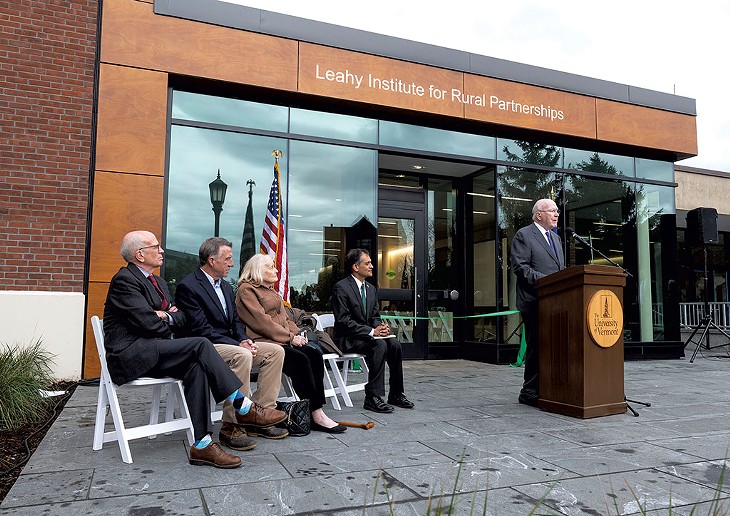

- Courtesy
- Patrick Leahy speaking at the 2023 dedication of UVM's Leahy Institute for Rural Partnerships
More recently, mechanical engineers Rachael Floreani and Irfan Tahir have started growing meat from cells extracted from live animals, and Floreani recently cofounded the company Burlington Bio. It's getting $200,000 from UVM's Leahy Institute for Rural Partnerships this year to research another innovation related to whey, a by-product of cheesemaking, by recapturing its nutrients to make protein-rich foods.
Related Lab-Grown Meat Could Help Feed a Climate-Changed World. Newly Launched Burlington Bio Hopes to Take a Bite.
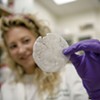
Lab-Grown Meat Could Help Feed a Climate-Changed World. Newly Launched Burlington Bio Hopes to Take a Bite.
By Melissa Pasanen
Food + Drink Features
The UVM-grown Verde Technologies, which makes lightweight, flexible solar panels, won $500,000 this year in a contest sponsored by the U.S. Department of Energy and is raising money from several local and national investors.
Several spin-offs have emerged from the medical school, including the Burlington company CoreMap, which grew from cardiologist Peter Spector's research on atrial fibrillation, a type of heart arrhythmia.
Related CoreMap CEO Sarah Kalil Is Building a Better Way to Treat Atrial Fibrillation

CoreMap CEO Sarah Kalil Is Building a Better Way to Treat Atrial Fibrillation
By Chelsea Edgar
Health Care
"Being an R1 research university requires you to have a very strong, robust academic research program," Merrill, the innovation officer, said. "But it's more holistic than that. It's not enough to have laboratories here publishing papers.
"We'd not doing this so we can produce more PhDs who can teach elsewhere," he said. "We're doing this because we want to spin off startups from any research in the university."
Some of the work in UVM's labs and classrooms is directly relevant to Vermont. The Water Resources Institute will help scientists better forecast floods. And its lake research focuses on outbreaks of cyanobacteria, also known as blue-green algae, which can be toxic and often closes local beaches.
Professor Tom Borchert, chair of UVM's Department of Religion, plans to study religion in Vermont. The state is often described as having little organized religion, but that's not accurate, Borchert said.
"There is a wealth of people that are lost, that are ignored, in the narrative that Vermont is an irreligious state," he said. "There's a whole subset of people who fit in the spiritual, not religious, camp, that I think should be included in the discussion."
Tim Rademacher, a University of Cambridge graduate who is the newly hired scientific director of UVM's Proctor Maple Research Center, looks forward to researching the impact of warming temperatures on maple trees.
These pursuits can generate knowledge involving an important industry and bolster arguments for increasing Vermont's contribution to its flagship university. After holding UVM's appropriation flat at $40 million for 10 years, the legislature in 2022 increased its support by 25 percent, to $50 million, and has since increased that to $57 million.
"We're very grateful" for the increase, Dombrowski said, before going on to say he wished the state would offer more.
"If Vermont were to embrace UVM, we'd be a much more effective engine in helping build the next Vermont," he said. "Most of the time, we hear, 'The state can't do anything unless you show me it will have an impact on all 14 counties.'"
He gets that, he said. But he added that if UVM is to be an engine for all of Vermont, "it has to be an engine first."
Staying the Course
UVM's trustees are looking for a successor to president Garimella who will continue to make research a priority. Lumbra thinks the gains UVM has made will help draw the right contenders.
"Our reputation within academia is fantastic," he said. "We're marching toward R1 recognition, and we've doubled research. We've become the kind of institution that will attract more talent than, candidly, we could when Suresh was a candidate."
Some on campus had suspected that Garimella was in Vermont only to burnish his résumé before moving to a larger stage. The same cloud hovers over Dombrowski, though he told Seven Days that he likes Vermont and wants to stay.
And critics worry the focus on research could diminish the liberal arts, a traditional area of study that has been challenged nationally in recent years. In 2020, Bill Falls, the dean of the College of Arts and Sciences, released a plan to phase out 12 majors, 11 minors and four graduate programs. While some programs were eventually cut and others merged, the jury is out on campus about what was lost.
Related Major Fallout: UVM Scholars Argue That Cuts to the Humanities Would Imperil the University's Mission

Major Fallout: UVM Scholars Argue That Cuts to the Humanities Would Imperil the University's Mission
By Chelsea Edgar
Education
"We came out remarkably whole," Borchert, the religion professor, said of those cuts. But there's still uncertainty on campus about the future of the liberal arts, he added. "I think people are supportive of research and interested in research and also anxious about the way it might change the university," he said.
Increasing the emphasis on research won't change UVM's broader mission, according to trustee Frank Cioffi, an alumnus who is president of the Greater Burlington Industrial Corp.
"There are immense opportunities for research in all of the nontypical academic areas like sociology, as well as engineering, sciences and others," Cioffi said. "It's not an either/or."
The university's appeal drew 30,000 people to apply this year — a 14 percent increase. Officials anticipate an incoming class of about 2,840 first-year undergraduate students — just slightly fewer than the number who started last fall. That's within the goal set by administrators, Dombrowski said.
The proportion of Vermonters in the class is 19 percent, up from 16 percent two years ago. And about half of the entering class is from outside New England, which illustrates the school's broader appeal.
At the National Science Foundation event in June, Dombrowski told the audience that Vermont needs UVM to stay large — perhaps too large for a state with only 5,000 high school graduates each year — to compete nationally.
"It either works or we get small," he said. "I don't like to get small."
The original print version of this article was headlined "Dollars for Scholars | To secure its future, the University of Vermont builds its research muscle"
Got something to say?
Send a letter to the editor
and we'll publish your feedback in print!
About The Author
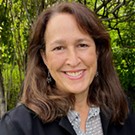
Anne Wallace Allen
Bio:
Anne Wallace Allen covers breaking news and business stories for Seven Days. She was the editor at the Idaho Business Review and a reporter for VTDigger and the Associated Press in Montpelier.
Anne Wallace Allen covers breaking news and business stories for Seven Days. She was the editor at the Idaho Business Review and a reporter for VTDigger and the Associated Press in Montpelier.
More By This Author
Latest in Education
Speaking of...
-

After Reorganization, Vermont State University Enrollment Rises
Sep 5, 2024 -

UVM Provost Patricia Prelock to Serve as Interim President
Aug 19, 2024 -

UVM President Garimella to Leave for University of Arizona
Aug 9, 2024 -

UVM, Middlebury College Students Set Up Encampments to Protest War in Gaza
Apr 28, 2024 -

Records Show UVM Professors Questioned Decision to Nix Palestinian Writer’s Appearance
Dec 20, 2023 - More »


































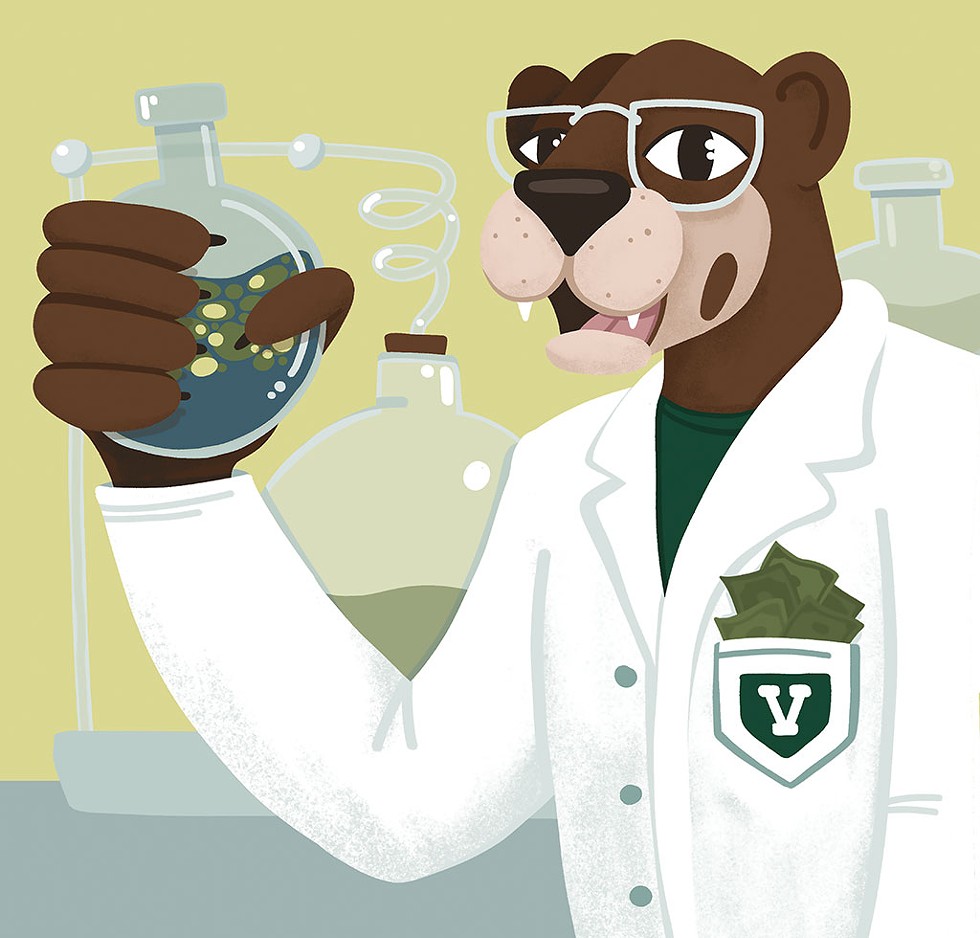
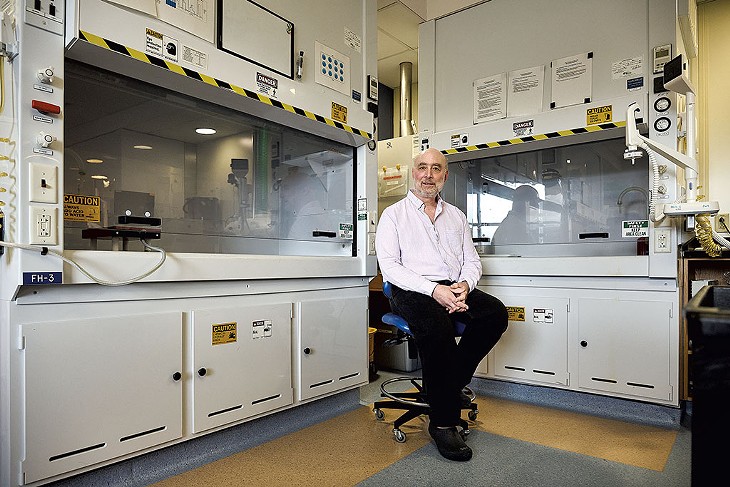
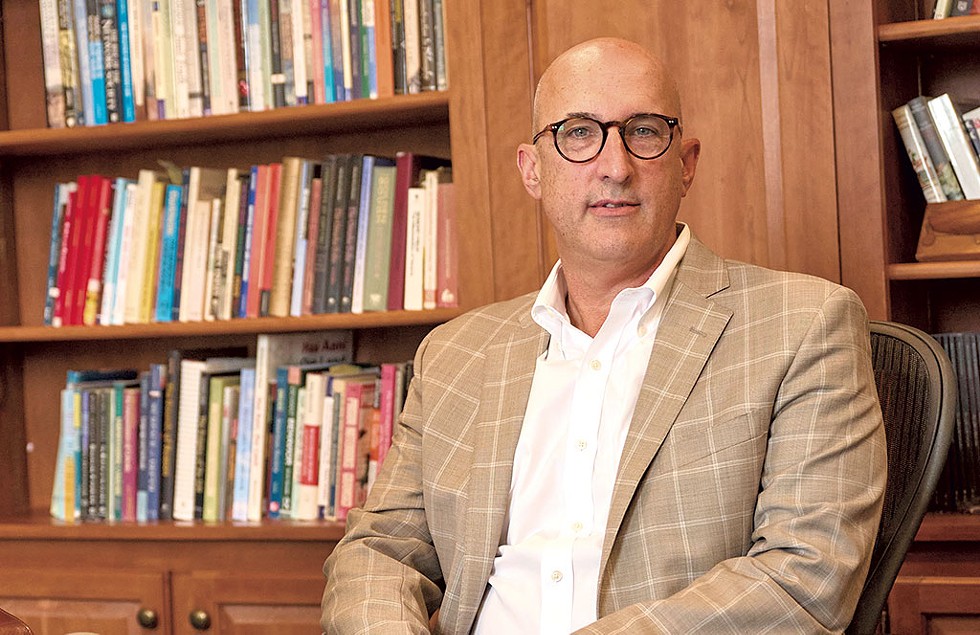

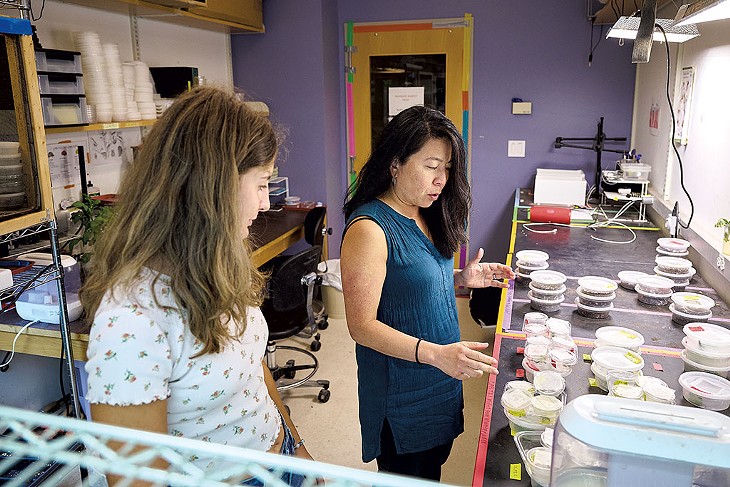
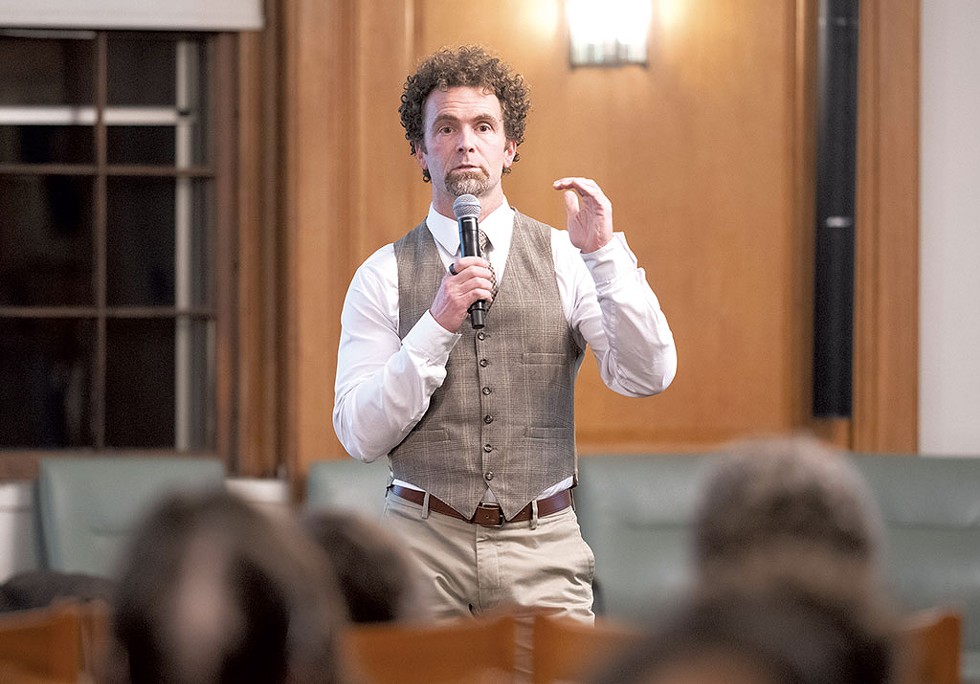
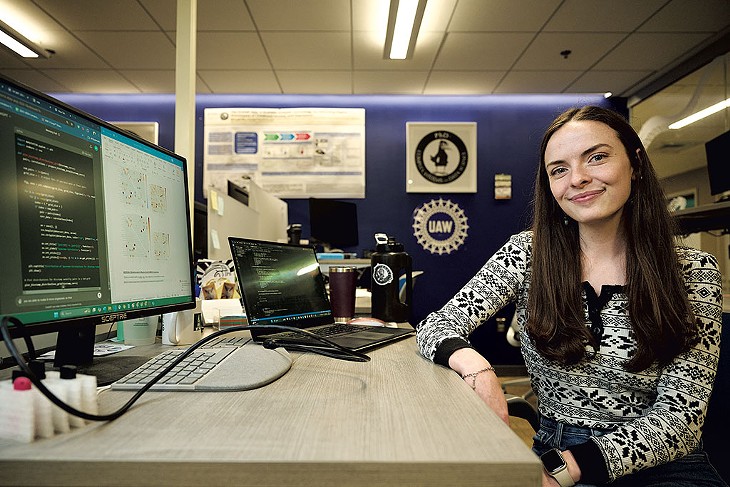
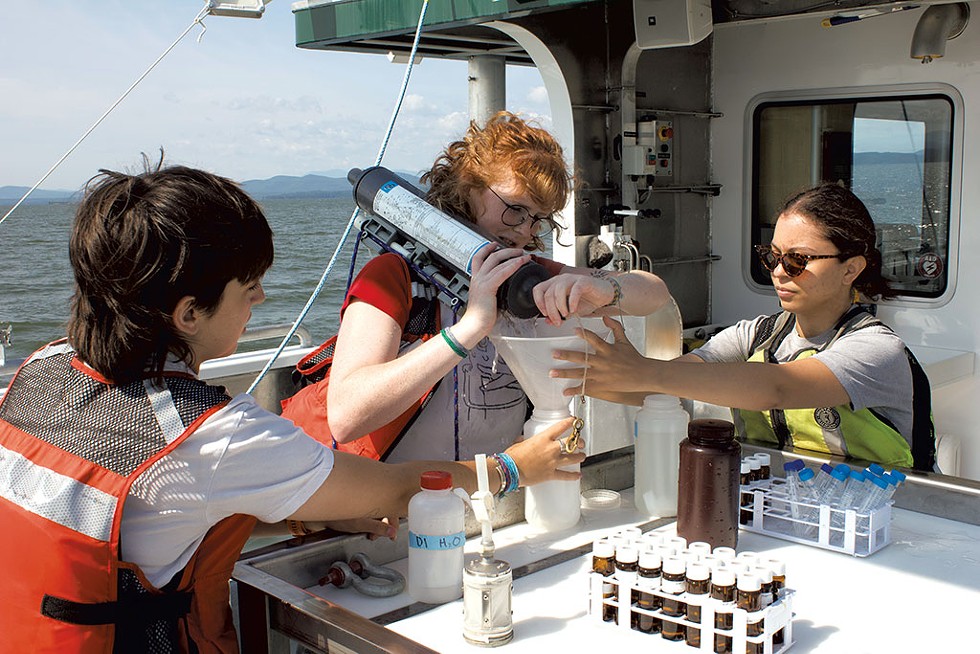

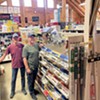
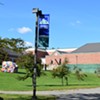
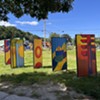
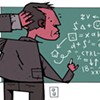
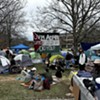
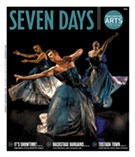
find, follow, fan us: